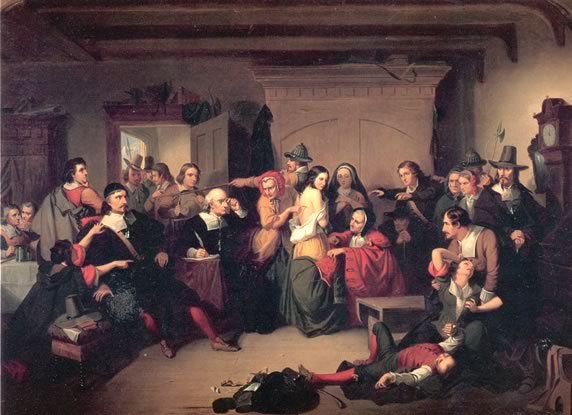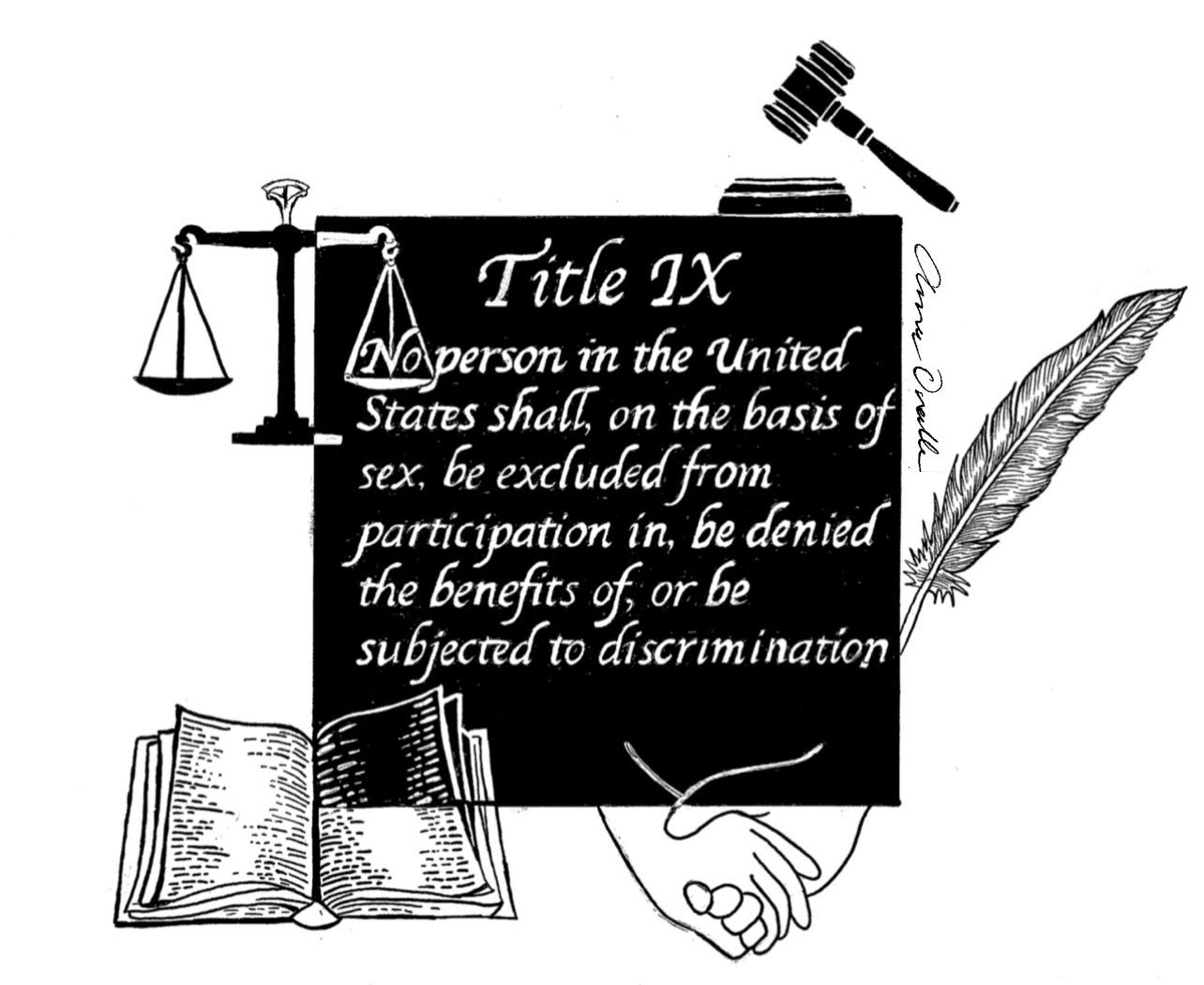Why would adults in Salem, Massachusetts in the 1690s take the accusations of nine year old girls seriously? During the seventeenth century, New England had grown diverse. The people living in the communities were of different backgrounds. But in the 1690’s there was an apparent outbreak of witchcraft. The most famous of these outbreaks was the event in Salem, Massachusetts in 1692 that stirred up the Salem community and soon spread to other communities.
The widespread hysteria over witches was all over the town after an accusation of witchcraft was made in January 1692. A group of young adolescent girls met in the home of Samuel Parris, a Puritan pastor in Salem. The pastor had a nine year old daughter, Betty. Betty and her cousin Abigail were fascinated by the voodoo tales and tricks told to them by the family slave. The family slave, Tituba, was the one whom the little girls had sought after for entertainment.1 It was not long after their time spent with Tituba, when the girls began to behave strangely; seeing visions, babbling at times, and lapsing into trances. The Puritans thought that these behaviors were of witchcraft, as the work of the devil. People in Salem began believing the girls, and charged Tituba and two other village women for practicing witchcraft on them. Two men, John Hathorne and Johnathan Corwin of Massachusetts, were called to do a legal examination of the women. The Puritans followed the Old Testament law. This was how they assessed the examinations. Scripture had a statement that said witches were not able to live. The two men knew exactly what they had to do. The examination was done on these women of Salem by looking for a certain mark on the body: a wart or tit. This specific mark was said to be the place where the devil and his demons would take blood out of the witch.2 Many of the women accused were of lower status in the community.

Research shows most of the accused witches were middle-aged women, widowed, with few or no children. Also, if the woman had been involved with domestic conflicts, they were accused. The women were accused of crimes and appeared to be dangerous by their neighbors. Women in Salem who inherited or possessed land were also accused of witchcraft.3 The accusations towards these women were out of the ordinary and seemingly wrong. One must first think about the view of women during this time. They were undermined and portrayed as having no power or knowledge of such things; they were subservient to the men in the community. Not only were low class women accused of witchcraft, but as time passed, superior women were accused as well.4
On October 29th, the Salem Witch Trials were called to an end. Governor Phips dismissed the Court and that marked the end to the witch hunt craze. Many were disappointed about the ending of the trials, but many were glad to return to work.5 The community in Salem blamed Pastor Parris for letting the innocent die. The people of the Salem church also voted to void his salary. In the following years, those family members of the deceased were restored their good names. The families were awarded a compensation for all the financial loses they went through during such tragic times. Increase Mather, a pastor of the Boston Puritan Church, wanted the people to do away with the court because he believed they put innocent people to death.
The Witch trials took on an important role in American History. The trials became a tragic and memorable moment in history. Generational, racial, and sexual hostility, opposition to law, social stresses, and food poisoning were all causes as to why the people had anxieties that found release in the witch hunt craze. The witch hunts became searches for scapegoats; the community leaders were looking for anyway possible to ease the community’s anxieties.6
- Kenneth P. Minkema, “In the Devil’s Snare: The Salem Witchcraft Crisis of 1692,” The Christian Century, no. 8 (2003): 37. ↵
- Salem Press Encyclopedia, January 2015, s.v. “Salem Witchcraft Trials,” by Warren M. Billings and Kimberly Manning. ↵
- Alan Brinkley, American History, 15th ed., vol. 1: to 1865 (2 Penn Plaza, New York, NY 10121: McGraw Hill Education, 2015), 86-87. ↵
- Salem Press Encyclopedia, January 2015 s.v. “Salem Witchcraft Trials,” by Warren M. Billings, Kimberly Manning. ↵
- Salem Press Encyclopedia, January 2015 s.v. “Salem Witchcraft Trials,” by Warren M. Billings, Kimberly Manning. ↵
- Salem Press Encyclopedia, January 2015 s.v. “Salem Witchcraft Trials,” by Warren M. Billings and Kimberly Manning. ↵



178 comments
Dejah Garcia
Great article! It was super interesting knowing they falsely accused and killed many innocent females! It is devastating to think about that. I’m glad you were able to portray that through your article. To add on, in the beginning, you mentioned that a nine-year-old made accusations against Tituba. I would never think that someone would do that throughout this time or any time in general. It makes me question the physiological thoughts and mindset at the time. Super crazy!
Vanessa Fabila-Ramirez
I always love hearing about the witch trails. Reading your article made me get a better understanding of the women. I feel like you should always make sure kids are telling the truth in situations that could really effect peoples life. They’re also kids and kids like to play around so I think them seeing things was just them being kids. Governor Phips was right to end the witch trails. They should have never existed, in my opinion.
Gabriella Parra
I knew of the Salem Witch Trials, but I did not know that the families of the innocent women were given compensation for their losses! I can’t imagine living in the colonies during that time. Especially as a woman. It seems some women thought it was safest to act like one of the “afflicted” and accuse other women in order to avoid being accused themselves. It is no surprise that few men were killed as a result of the trials.
Rodney Jones
you perfectly explained the main topic of this article and never once got off topic, you explained how it affected their economy, and mainly how it affected the women around them. I got a great understanding of the details, and I understood the main topic very well.
Paula Ferradas Hiraoka
This was a very well article and informative! Also, I really like the title. I think it was a great choice. It’s simple but precise. You made an amazing point in the first line of this article, what made me read the entire article. This is definitely something to think about. The events of the witch trials still astonish me to this day, and cannot imagine being falsely accused and losing my life over the accusations of a little girl. Amazing article and amazing work!
Mckenzie Gritton
I have to admit Hocus Pocus being in the title caught my attention. I really enjoy getting to learn about the witch trials. I didn’t know that the persecutions began because of the accusations of a 9 year old. Why the adults in Salem believed that is beyond me. To think that if someone had a wart or marking that they would be accused of being witches is just insane. Great article!
Jesslyn Schumann
I have a fascination with the Salem Witch Trials and how it affected the small area of Salem. I did not realize that this whole thing started because of two little girls. It goes to show how quickly something can spread and how it can cause anxieties between communities. Times like these made it so hard to trust those around you because you did not know who would accuse who. I also did not realize that women who were higher up also became affected. Great article!
Velma Castellanos
As soon as I read Salem, I was already interested in the article. My sophomore year of high school we had read an entire book on the Salem Witch Trails and this article was a good reminder of how mass hysteria can get out of control. I did not know this entire thing started off from two little girls. I always thought they were teen girls not children. I liked reading this article because it was short and covered the main things in Salem.
Maria Luevano
This was a very well article and informative! You made an amazing point in the first line of this article, Why would anyone take such a serious accusation from a nine-year-old seriously?! This is definitely something to think about, and potentially how a child’s imagination can lead to the death of many. The events of the witch trials still astonish me to this day, and cannot imagine being falsely accused and losing my life over the accusations of a little girl. This was definitely a crazy time in history!
Claudia Sanchez
This article was a short and sweet telling of the Salem witch trials that have famously been talked about in American history and pop culture even today. The author of this article provides a very beginning to end look at the trials which help to chronologically understand this phenomenon that is mind-boggling to Americans today. This article has a great opening question that intrigues the reader to know why and how the Salem witch trials occurred.